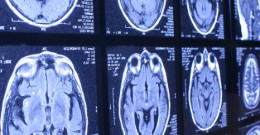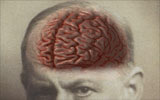Neuropsychoanalysis explores the interface between neurobiological knowledge and psychoanalytic models of the human mind. As neuroscience maps the brain, from molecules to networks, a common ground has emerged between fields which were separated for too long. Now, with advances in technology that give us a window on an active brain, we can link brain processes with psychoanalytic concepts – ideas that emphasize the deep unconscious layers of the mind, the central role of emotions and interpersonal relations in mental life, and the importance of fantasy and mental representations. Neuroscience is rapidly expanding our understanding of the neural circuits involved with conscious and unconscious processes, motivation, emotion, self-regulation, memory, interpersonal relations, and more. As we bring these domains together, neuropsychoanalysis illuminates how the mind is organized at the deepest levels can inform and enrich brain exploration – and vice versa.
Mark Solms, the late Jaak Panksepp, Jeffrey Lieberman, Elizabeth Auchincloss, Maggie Zellner, and our NPSA grantees Eric Fertuck and Alla Landa discuss neuropsychoanalysis in this video featured in the “Thought Leaders” series on APA TV at the American Psychiatric Association meeting in May, 2015.
As a point of contact between wide-ranging disciplines, neuropsychoanalysis takes on many topics and disciplines. Psychodynamic neuroscience investigates the brain mechanisms of intrapsychic or intersubjective processes, using psychoanalytic concepts to enrich brain research. Clinical neuropsychoanalysis includes working with neurological patients in psychodynamically-informed ways, or using observations from work with neurological patients to inform neuropsychoanalytic theory. Theory-building integrates neuroscience findings and models with psychoanalytic constructs, in order to move towards a more complete understanding of the mental apparatus.
Recommendation for Further Reading:
Solms and Turnbull, 2011: “What Is Neuropsychoanalysis?”
Additional readings in neuropsychoanalysis
Support Neuropsychoanalysis!
To make a fully tax-deductible donation to the Neuropsychoanalysis Foundation, please select the amount you wish to give below, and click on “Contribute.” You will receive a donation confirmation by email. To read our Terms and Conditions, click here. Thank you for your support!




